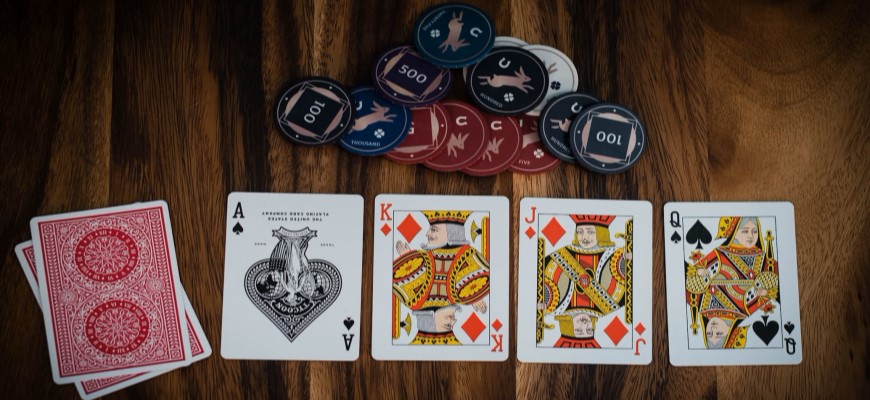Tips and Strategies for Online Poker Success

This article offers great tips and tactics for succeeding at the virtual tables if you’re ready to improve your abilities and boost your earnings in online poker.
Effective Bankroll Management
Sustaining long-term success in online poker requires strict bankroll management. This tactic prevents money from running out and helps you weather losing streaks.
Whether you’re playing at a casino in Canada or online, respecting your budget and adjusting the stakes according to your bankroll’s progress is essential.
For cash games, aim for at least 20 buy-ins, with some players preferring a safety net of 40-50 buy-ins.
For tournament poker, allocate 5-10% of your bankroll to each entry fee and ensure you have at least 100 buy-ins. Set time and money limits to know when to end a session. Utilize freeroll tournaments and incentives to grow your bankroll while minimizing risk.
After gaining at least three times your usual buy-in, consider increasing stakes, but be ready to retreat if outcomes are unfavorable. Adhering to these rules helps preserve and grow your budget for continuous online poker engagement.
Understanding Odds and Outs
In order to place wise bets in Texas Hold’em, you must learn how to calculate your hand’s odds and identify your outs.
For strategic betting, figuring out the likelihood of hitting a winning combination is essential. For instance, knowing how many cards you can use to strengthen your hand can help you evaluate its chances in future communal card reveals.
Whenever these calculations are incorporated into the gameplay, decisions that were previously difficult can become simpler.
For example, holding a drawing hand with the potential to grow into something fearsome in subsequent rounds of play makes semi-bluffing a realistic tactic.
Making more consistently profitable gameplay decisions is ensured by comparing the pot odds that are now accessible to you with the possibility of finishing your desired hand.
Optimal Bet-Sizing Strategies

The size of your bet is important in No Limit Hold’em because it tells opponents how you plan to play. Among the major variables affecting bet size are:
- Preflop maneuvers
- Texture of community cards
- Comparative stacking of chips
- Possible benefits of the hand
On dry boards, smaller stakes (25–35% pot) can stop opponents from cheaply taking advantage of their hands.
A continuation bet (c-bet) of 25–40% of the pot puts opponents with medium-strength hands under pressure in re-raised pots before to the flop.
Value and bluffing potential can be maximized on the turn by placing a c-bet for at least two-thirds of the pot. When in control of a powerful hand, overbetting (also known as “nut advantage”) can maximize earnings and raise fold equity.
Stack-to-pot ratio (SPR) betting adjustments guarantee efficient maneuvering in later stages. Gaining proficiency in these bet-sizing strategies improves control and earnings at the gaming table.
Bluffing and Semi-Bluffing Techniques
Bluffing, or getting rivals to fold better cards, is the secret to a successful poker move. To effectively bluff, one must take into account elements like:
- Where you are in the play sequence;
- The size of your chip stack in relation to other players;
- Your style as perceived by other players;
- Your recent betting habits.
Robust yet assertive bluffs lend credibility to strong wagers, increasing their potency. It’s important to wager consistently because inconsistent bets can indicate weakness.
From early or mid-table positions, bluffing is less successful since there is a greater chance that opponents will possess good cards. If such draws come through, semi-bluffing with possible draws can be profitable.
Refrain from bluffing too much, especially when facing “calling stations” who hardly fold. Gaining proficiency in strategic deception increases your chances of success.
Value Betting for Maximum Profit
When you have the best hand, you must use value betting to maximize your profit. It’s important to make bets that push more chips from weaker hands into the pot when you have a stronger hand.
Since top pairs and other strong combinations are uncommon, taking full advantage of these circumstances is essential.
When facing weaker hands, use thin-value bets, particularly when facing inexperienced players who are prone to overcalling.
In order to generate additional value, skilled players frequently wager for value with mediocre hands like middle pairs. To guarantee maximum profit, always value bet against inexperienced players, even with hesitant hands, all the way up to the river.
Defending Your Blinds

Because of the big blind’s specific edge, protecting your blinds is essential to keeping a healthy chip count. It gives you better pot odds when you answer to a raise because you’ve already committed one huge blind to the pot.
To increase your odds, play hands that are likely to develop post-flop, like high pairs and suited connectors.
Re-raised pots should be played cautiously while defending the small blind or against many opponents, as the tiny blind rarely pays off in the long run.
Even with many limpers, avoid calling poor hands from the small blind in unraised pots, as this frequently results in tough choices after the flop. Give priority to hands that have the potential to win large amounts in the future.
Managing Tilt and Emotional Control
Understanding tilt triggers, like as poor beats or extended streaks of unfavorable hands, is essential to playing poker logically.
When things are hard, it helps to think of chips as points rather than money. To control emotions, make sure you’re in a good mood before you start playing. If you’re upset, take a break to gather your thoughts and stop yourself from making snap decisions.
Playing some music can help you stay calm and composed. Stop playing if the tilt continues to cause you further financial and emotional harm. In poker, more tilt management results in improved performance and greater enjoyment.
Adapting to Different Player Types
Recognizing and adapting to opponents’ different styles is crucial if you want to increase your chances of winning.
An opponent who frequently plays loose and passively and has a tendency to call with subpar hands is known as a calling station.
Avoid bluffing when you are up against a calling station. Rather, even while holding hands of modest strength, give priority to value betting.
On the other hand, maniacs play in many pots and show a lot of aggression, which increases volatility and the possibility of long-term losses for them.
Keep up a tight playstyle to fight a maniac’s tactics; support their bluffs while refusing to concede on what makes a solid hand.